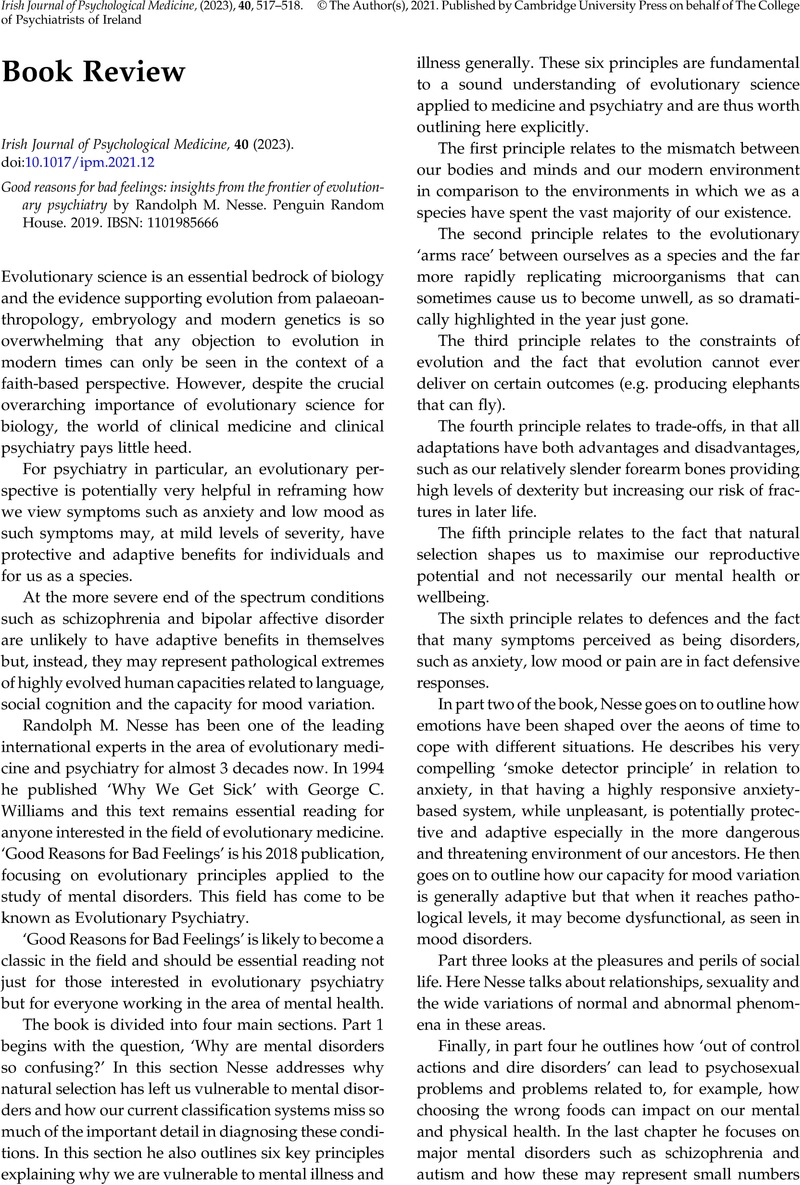Crossref Citations
This article has been cited by the following publications. This list is generated based on data provided by Crossref.
Brar, Gurjot
and
O’Connell, Henry
2024.
Evolution and psychiatry: the formation of a special interest group.
Irish Journal of Psychological Medicine,
Vol. 41,
Issue. 1,
p.
1.



